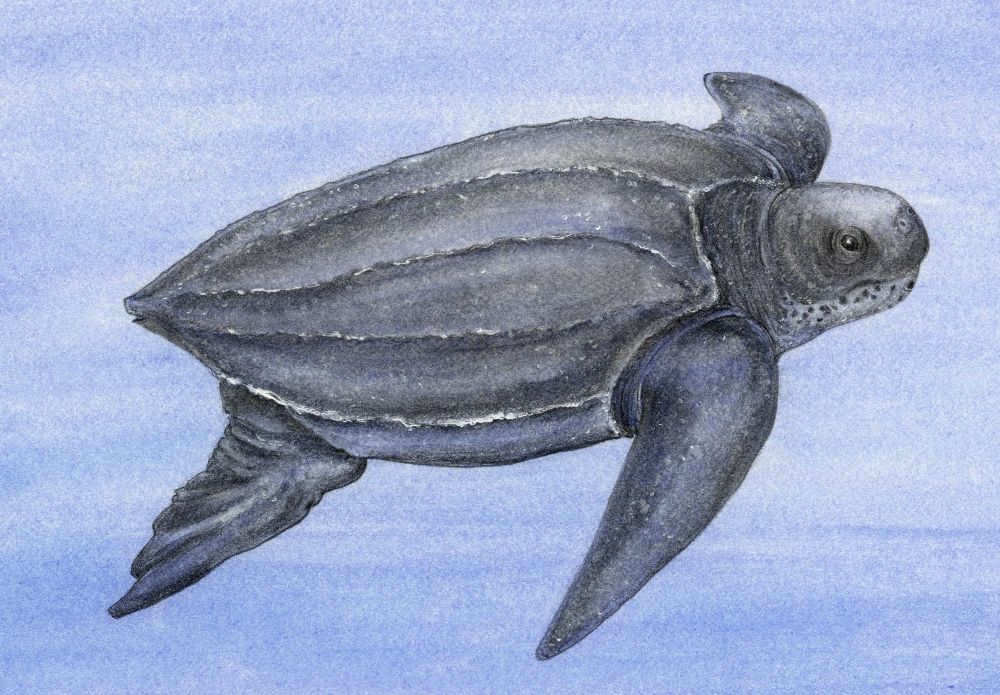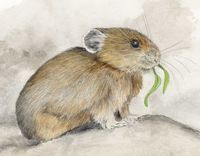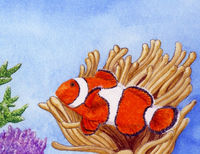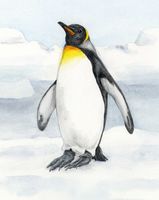
Leatherback Sea Turtle
Latin name: Dermochelys Coriacea,Conservsation status: vulnerable (population is decreasing)
The largest of all sea turtles, the Leatherback has been on Earth since the dinosaurs—100 million years. It can grow over six feet long, weigh up to one ton, and dive over 3,000 feet—deeper than any other turtle.
Climate change impacts the Leatherback in two main ways: an increase in the temperature of nesting sands causes a greater proportion of females to hatch, destabilizing future populations; and sea level rise and stronger, more frequent storms erode nesting beaches and wash away eggs and hatchlings. The Leatherback is also threatened from fisheries by-catch, egg collection, coastal development, pollution and ingestion of floating plastics.
Other animals effected by climate change
 American Pika
American PikaAmerican pikas occupy talus—rock piles that accumulate at the base of a slope—at high elevations in western mountains. Pikas are thought to be a prime example of the potential effects of climate change because they are sensitive to warm temperatures and rely on insulation provided by snow to survive cold winter temperatures. However, several recent studies indicate that pikas can be resilient to each of these factors. Most pikas in the Sierra Nevada survived the winter of 2014, when there was almost no snowpack. Pikas persist in many hot localities as well, demonstrating their ability to cope with high temperatures.
 Narwhal
NarwhalThe Narwhal lives mainly in the Atlantic Arctic. Because of specialized habitat, narrow range and limited diet (Arctic cod and halibut), it is one of the Arctic species most vulnerable to climate change. The Narwhal breeds in bays and fjords, moving offshore during winter to areas of heavy ice pack, breathing through the few cracks. Sudden or extreme temperature change can cause these cracks to freeze shut, trapping the whales. Other threats are illegal hunting, industrial activities, and risks from oil development, exploration and shipping in the Arctic.
 Common Clownfish
Common ClownfishClownfish live in the shallow waters of coral reefs where they have a mutually beneficial relation with a few species of sea anemone. The anenome protects the Clownfish, and the fish's swimming aerates the water around the anenome. Clownfish are unable to move long distances, and rising ocean temperature and acidity is a threat to their coral reef habitats. Increased acidity also seems to impair their ability to navigate to their home anemones.
 Emperor Penguin
Emperor PenguinIn 50 years, the mean temperature of western Antarctica has risen nearly 3 °C—more than any other region—reducing the extent and thickness of winter ice. The Emperor Penguin is dependent on the ice for breeding, raising chicks and moulting. Less sea ice decreases zooplankton (krill) which feed on algae that grow on the underside of the ice. Krill are an important part of the food web for the Emperor and other Antarctic marine species.
